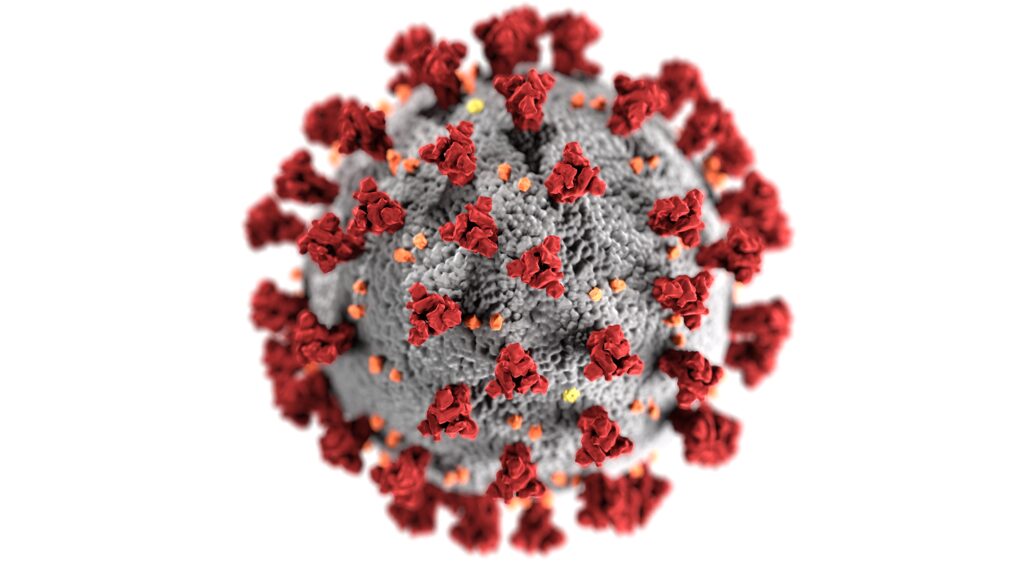With news that the coronavirus called 2019-nCoV is capable of spreading from human to human, many are concerned about the possibility of a new pandemic, and that is not outside the realm of possibility, according to Jeff Hogan, a professor and infectious disease expert in the College of Veterinary Medicine at the University of Georgia, who studied the SARS coronavirus extensively.
Below, he shares some of his thoughts on the current outbreak, how people can protect themselves and what the future may hold for 2019-nCoV.
What is a coronavirus?
“This is a virus that belongs to the family called Coronaviridae. For a very long time, the ‘human’ coronaviruses were thought to cause only mild to moderate respiratory tract infections unless a person has other medical conditions such as a suppressed immune system. This changed when severe acute respiratory syndrome (SARS) virus was isolated in 2002 and 2003.
“Based on the limited data available currently, this new outbreak is caused by a virus called 2019-nCoV that is different in many ways from the virus that caused the 2002/2003 pandemic. However, both viruses are very likely to have originated from bats, recombined with coronaviruses from other animals, and this gave 2019-nCoV the ability to efficiently infect and transmit among humans. It is important to note that further research is needed to confirm the origin of 2019-nCoV.”
How do coronaviruses spread?
“As with influenza, RSV and other respiratory viruses there are several routes of infection. Small to large droplets aerosolized when an infected person sneezes or coughs, and these can be inhaled into the nose and lungs. The aerosolization is thought to be the primary route of virus entry. However, droplets containing viruses can also be deposited on hard surfaces and persist for several days. A person can then touch a contaminated surface and self-inoculate by inserting their fingers in their nose, mouth or possibly eyes. I call it ‘the magic finger’ route.”
Are certain populations more susceptible/at risk for complications?
“Populations most at risk typically have one or more underlying medical conditions such as a suppressed immune system. Persons over the age of 50 with diabetes, HIV infection, and kidney or liver problems generally presented with the most severe disease after SARS-CoV infection in 2003. This may also be the case for 2019-nCoV, but additional data are needed to confirm this.”
What precautions should people take to limit exposure?
“First and foremost, avoid direct contact with persons known to be infected with 2019-nCoV. Also, travel to locations where human cases have been confirmed—Wuhan, China, for example—should also be avoided if at all possible. In addition, proper, thorough hand-washing is very effective at reducing the risk of self-inoculation by manually introducing the virus into the nose, eyes or mouth.
“While it may seem like a good idea, surgical-type masks will provide little if any protection from aerosols containing virus. A more effective approach could be to avoid poorly ventilated areas with lots of people in a confined space.”
How does this coronavirus compare to previous outbreaks (SARS, for example)?
“It is still too early to tell how 2019-nCoV compares to SARS-CoV in terms of ability to transmit person to person, morbidity, and mortality. However, good old-fashioned public health measures such as quarantine, hand-washing, surveillance of travelers and the use of advanced respiratory protection for health care workers was sufficient to end the pandemic in 2003 and are almost certain to do the same with the current outbreak.”
Are you concerned that this could turn into a new pandemic?
“With global travel, the identification of any new virus causing human disease is very concerning. This is compounded by the fact that human to human transmission has been well-documented for 2019-nCoV. Most concerning is the spread of the new virus in health care facilities as was the case with SARS-CoV in 2003.
“While WHO and other authorities have not declared this a pandemic, I do expect this type of announcement unless the rate of new cases begins to decline rapidly in the next seven to 10 days.”
